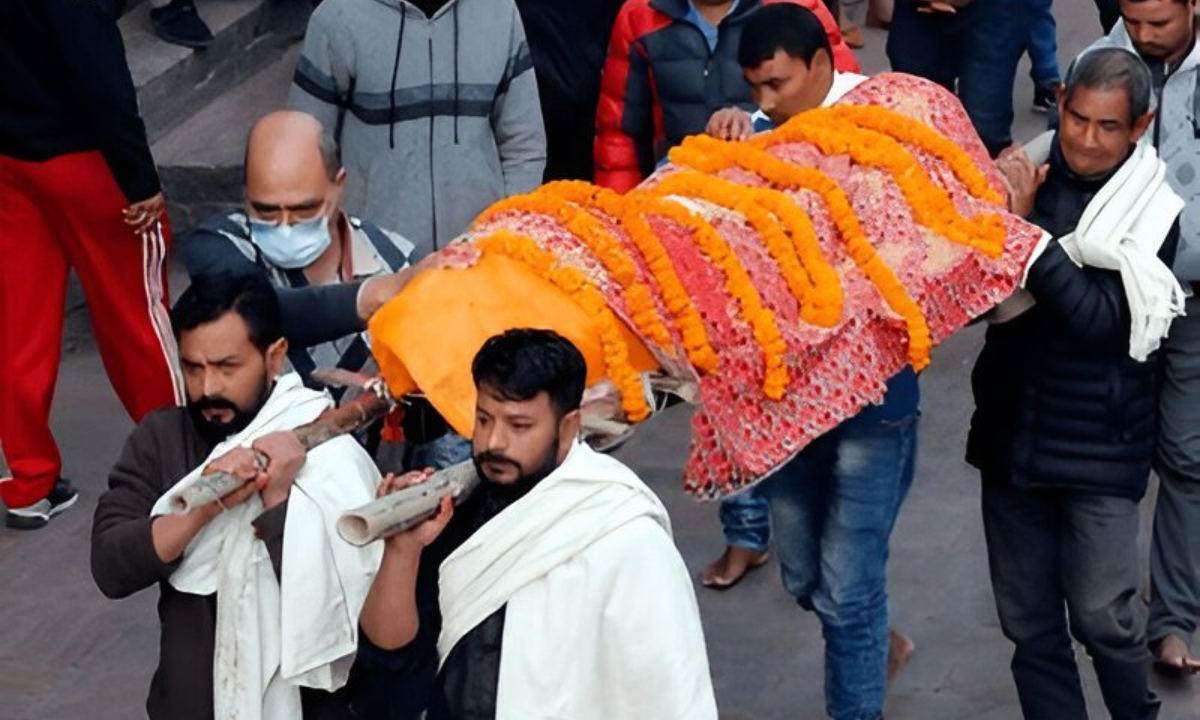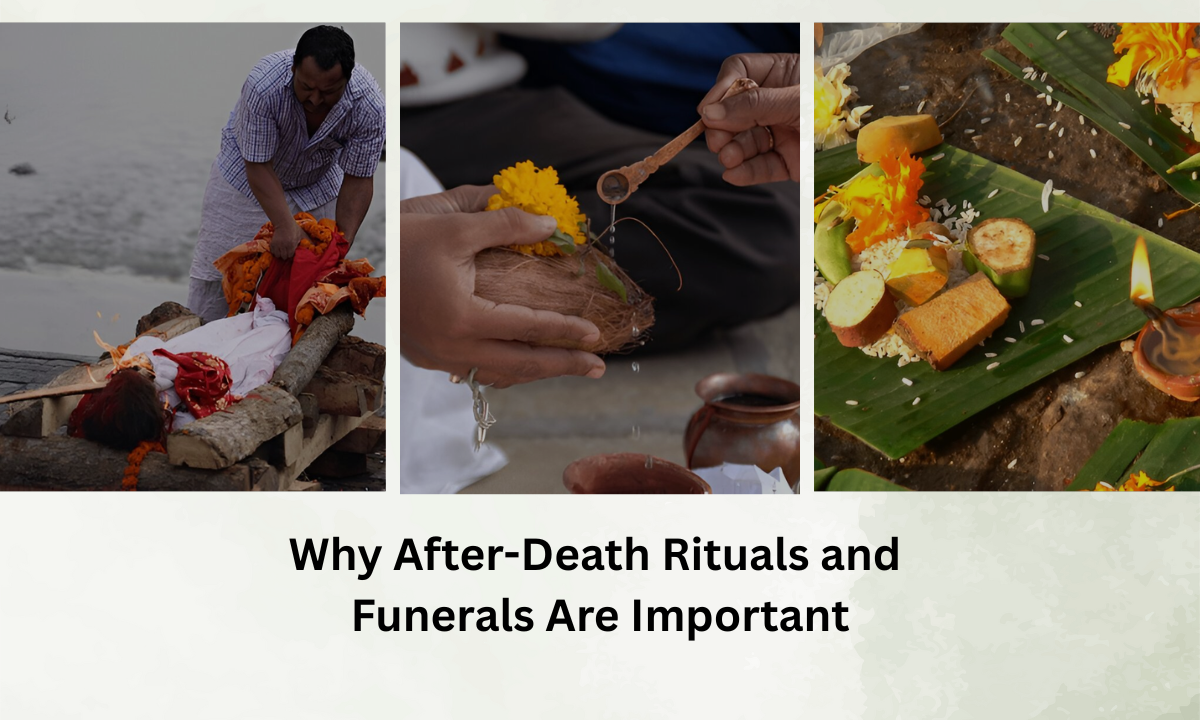After-death rituals are an integral part of how we, as a society, give dignity, structure, and meaning to loss. These rituals are not only cultural obligations but also psychological anchors that help families accept reality, process grief, and honor the departed soul with respect.
In Hindu tradition, the after-death ceremony is not a single event but a carefully sequenced journey of the soul. From the moment of passing, every act – the washing of the body, the funeral procession, the cremation, the Asthi visarjan, the Pind daan, and the Shraddha ceremony – carries scriptural intention. These actions are not symbolic alone. They are believed to support the soul’s onward transition and also provide emotional structure to the living.
As families are increasingly relocating, urbanizing, and splitting across cities, many take support from organized funeral services in India to ensure that nothing is missed even in stressful moments. Each ritual has meaning, sequence, and timing, and in the paragraphs ahead, we will see why traditions evolved the way they did and what their relevance is in our times today. And the deepest reason people still perform them may not be what it first appears to be.
Why After-Death Rituals Matter Beyond Religion
Two purposes operate together:
1) For the departed soul (as per Dharma Shastra), to purify, guide, and detach it from earthly bonds.
2) For the family left behind, to convert shock into acceptance through structured action.
Grief without structure becomes a burden. Ritual gives that burden a place to settle.
The Funeral Ceremony and Funeral Procession

The first major milestone is the funeral ceremony, often beginning at home and concluding at the cremation ground. The funeral procession is not merely a movement; it is a public acknowledgement that a life has completed its cycle. Carrying the body on the shoulders is considered the final duty of kin, an act of honor before departure.
Cremation Services and Cultural Logic
Hindu death rituals prescribe cremation for the rapid return of the body to the five elements. Modern cremation services provide the infrastructure while the family performs mantras, offerings, and final goodbyes. This is the moment where permanence becomes irreversible. For most, acceptance begins here.
Pind Daan, Meaning and Significance
Pind daan meaning is the offering of pind, a rice-based symbolic body given to the soul. It is believed to remove residual attachments and supply the soul with a subtle “vehicle” for onward travel.
Many families travel to perform Pind Daan at Gaya, a site believed to have exceptional spiritual merit according to the Garud Puran.
Shraddha Ceremony, Meaning and Timing
The Shraddha ceremony means remembrance with faith. The Shraddha ceremony after death on the 10th-13th days and the annual shraddha ceremony thereafter express gratitude and fulfil scriptural discipline.
Why “Time-Bound” Rituals Exist
| Ritual milestone | Spiritual reason | Psychological reason |
|---|---|---|
| Funeral day | Return to elements | From Shock to Acknowledgement |
| 10th-13th day rites | The separation of the soul from the body ties | Structure for the first fortnight of grief |
| Annual shraddha | Sustained remembrance | Converts guilt to disciplined gratitude |
Structure transforms helplessness into duty.
Asthi Visarjan, Rules and Timing
Asthi visarjan is the immersion of ashes in sacred water.
Common question: Asthi visarjan after how many days? — Traditionally after the 10th, 11th, or 13th day, depending on regional custom.
Asthi visarjan rules generally include:
- Do not delay without cause
- Use a clean urn and a cloth
- Maintain silence and prayer
- Immerse facing flowing water
The act signals the physical exit of the departed from one’s daily space.
Role of Organized Support
In urban conditions, not every family remembers the exact Antim Sanskar steps. This is why families often engage a funeral director and organize funeral services in India to ensure nothing sacred is missed when minds are numb.
These services do not replace family duty; they enable it with order.
Psychological Logic the Ancients Already Understood
Modern grief counselling recognizes steps: shock, denial, anger, bargaining, depression, and acceptance. Hindu death ceremony sequences map neatly over these human phases long before psychology existed. Ritual did for the mind what therapy does now, but with divinity at its centre.
Protecting Tradition in a Changing India
Migration, nuclear families, and workplace pressures make ritual continuity difficult.
Yet the need for ritual has not reduced; only the ability to handle logistics has.
This is why the support of structured Funeral services in India in the middle of cities preserves sanctity when families are scattered.
Practical Tips for Families
- Do not postpone decisions; uncertainty deepens distress
- Assign one coordinator, and confusion multiplies errors
- Write rituals in order; clarity reduces panic
- Ask elders early; wisdom must be captured before silence takes it
Final Thoughts
After-death rituals are not about superstition or appearance. They are a framework of meaning, duty, and closure. They help the living handle sorrow and help the departed complete their journey in dignity.
Even in modern cities, organized funeral services in India have become a bridge that protects continuity when families cannot carry every responsibility themselves.
In the end, tradition is not preserved because it is old; it is preserved because it continues to prevent suffering.
Kaashimukthi has assisted many such families in carrying out these delicate duties with order and reverence, ensuring that what must be done is done correctly, calmly, and without distress.
Frequently Asked Questions
1) Why are after-death rituals still relevant today?
They provide dignity to the departed, structure to grief, and continuity to culture. Without them, families struggle with emotional and social incompleteness after loss.
2) Is Pind daan compulsory or optional?
Traditionally, it is considered a duty of kin. Even when optional legally, families perform it to complete the spiritual obligations and dissolve emotional guilt.
3) Can Asthi visarjan be done later if relatives arrive late?
Yes, delay is permitted for genuine reasons, but the earliest feasible immersion is ideal to complete detachment and avoid prolonged emotional suspension.
4) Why are 11th, 12th and 13th day ceremonies important?
They mark the soul’s symbolic transition and give the family a defined end to the initial mourning phase, replacing chaos with ritual closure and acceptance.
5) Why do people use organized funeral assistance?
Because death creates shock and confusion, professionals ensure sequence, timing, and dignity remain intact, allowing families to grieve without logistical mistakes.

